
By Mary R. Lee
Discover the Best Spots to Witness the Breathtaking Alaska Northern Lights: Nature's Dazzling Light Show!
Great Places To See the Alaska Northern Lights
Thursday 14 November 2024
The Northern Lights, also known as the Aurora Borealis, are a natural phenomenon that occurs in the Earth's polar regions. They are a stunning display of colorful lights dancing across the night sky. The Aurora Borealis is most commonly seen in the Arctic regions,such as Alaska, Canada, Norway, Sweden, and Iceland, although they can occasionally be observed at lower latitudes as well. Choose the tour that best suits you from our vast selection of Northern Lights Tours in Alaska. Our expert guides ensure the best possible experience.

Here are some key points about the Northern Lights:
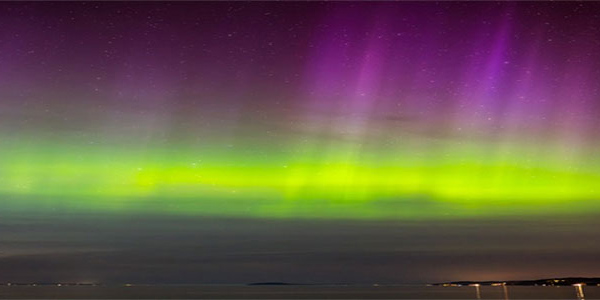 Formation: The Northern Lights are created when charged particles from the Sun, called solar wind, interact with the Earth's magnetosphere. As these particles enter the Earth's atmosphere, they collide with atoms and molecules, causing them to emit light. The colors of the lights depend on the type of gas involved in the collision. Oxygen molecules typically produce green and red lights, while nitrogen molecules generate blue and purple lights.
Formation: The Northern Lights are created when charged particles from the Sun, called solar wind, interact with the Earth's magnetosphere. As these particles enter the Earth's atmosphere, they collide with atoms and molecules, causing them to emit light. The colors of the lights depend on the type of gas involved in the collision. Oxygen molecules typically produce green and red lights, while nitrogen molecules generate blue and purple lights.
Appearance: The Northern Lights appear as vibrant curtains, arcs, or swirling patterns in the sky. They can vary in intensity, from faint, almost transparent hues to intense, glowing bands of light. The colors can also change and shift rapidly, creating a mesmerizing visual spectacle.
Season and Timing: While the Northern Lights can occur throughout the year, they are most visible during the winter months in the Northern Hemisphere when the nights are longer and darker. However, they can also be seen during the equinoxes in September and March when there is increased solar activity.
Best Viewing Locations: Look for locations that offer relatively clear skies and minimal light pollution to enhance the chances of seeing the lights.
Mythology and Cultural Significance: The Northern Lights hold great cultural and mythological significance for various indigenous peoples living in the Arctic regions. In many cultures, they are believed to be mystical or spiritual phenomena, often associated with stories of spirits, gods, or ancestors.
Photography and Capturing the Lights: Photographing the Northern Lights can be challenging but rewarding. To capture the lights, a camera with manual settings and a sturdy tripod are essential. Long exposures and high ISO settings are often used to capture the vibrant colors and intricate details.
Our most popular locations to see the Northern Lights in Alaska:
1. Fairbanks
Fairbanks is considered a great location for viewing the Northern Lights (also known as the Aurora Borealis) for several reasons. The town is situated in the auroral oval, which is a ring-shaped region around the North Pole where the Northern Lights are most frequently seen. This means that Fairbanks is located within the prime latitude for viewing the auroras, increasing the chances of witnessing this natural phenomenon.  Fairbanks experiences relatively clear skies compared to other parts of Alaska and the Arctic. The city has a lower average annual cloud cover, which means there are more opportunities for unobstructed views of the night sky and the Northern Lights. The town has minimal light pollution, especially when compared to larger cities. This lack of artificial light makes it easier to see the Northern Lights and appreciate their full brilliance. The auroras can be seen from late August to mid-April, providing a substantial window of opportunity for visitors to witness this stunning natural light display. Fairbanks is relatively easy to reach, with an international airport and well-developed infrastructure. Take a guided Northern Lights Viewing Tour to a lodge outside Fairbanks or to Murphy Dome and enjoy the Northern Lights spectacle.
Fairbanks experiences relatively clear skies compared to other parts of Alaska and the Arctic. The city has a lower average annual cloud cover, which means there are more opportunities for unobstructed views of the night sky and the Northern Lights. The town has minimal light pollution, especially when compared to larger cities. This lack of artificial light makes it easier to see the Northern Lights and appreciate their full brilliance. The auroras can be seen from late August to mid-April, providing a substantial window of opportunity for visitors to witness this stunning natural light display. Fairbanks is relatively easy to reach, with an international airport and well-developed infrastructure. Take a guided Northern Lights Viewing Tour to a lodge outside Fairbanks or to Murphy Dome and enjoy the Northern Lights spectacle.
2. Chena Hot Springs Resort
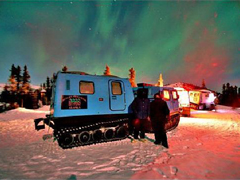 Chena Hot Springs Resort is situated about 60 miles northeast of Fairbanks, providing a relatively remote and secluded location away from city lights. This helps to minimize light pollution and enhances the visibility of the Northern Lights. The resort benefits from clear skies, particularly during the winter months when the Northern Lights are most active. The location's dry climate and its position away from major cloud cover sources contribute to better viewing conditions. Chena Hot Springs Resort has a designated Dark Sky Viewing Area, which is an open space with unobstructed views of the night sky. This area is specifically designed for optimal Northern Lights viewing, allowing guests to enjoy the spectacle without any nearby light pollution. The resort is renowned for its hot springs, which can be a wonderful experience while waiting for the Northern Lights to appear. Guests have the opportunity to soak in the warm mineral-rich waters, relax, and enjoy the soothing atmosphere while keeping an eye on the night sky. Join a guided aurora viewing tour, led by experienced guides who are knowledgeable about the Northern Lights and the best times and locations to see them. These tours provide guests with the opportunity to maximize their chances of witnessing the auroras and learn more about this natural phenomenon. The resort provides a range of accommodation options, from cozy cabins to a full-service hotel. Additionally, it offers amenities such as restaurants, a lounge, and other facilities to ensure a comfortable stay for visitors. A popular tour with our guests is the combination of the Alaska Railroad Tour with Chena Hot Springs Resort.
Chena Hot Springs Resort is situated about 60 miles northeast of Fairbanks, providing a relatively remote and secluded location away from city lights. This helps to minimize light pollution and enhances the visibility of the Northern Lights. The resort benefits from clear skies, particularly during the winter months when the Northern Lights are most active. The location's dry climate and its position away from major cloud cover sources contribute to better viewing conditions. Chena Hot Springs Resort has a designated Dark Sky Viewing Area, which is an open space with unobstructed views of the night sky. This area is specifically designed for optimal Northern Lights viewing, allowing guests to enjoy the spectacle without any nearby light pollution. The resort is renowned for its hot springs, which can be a wonderful experience while waiting for the Northern Lights to appear. Guests have the opportunity to soak in the warm mineral-rich waters, relax, and enjoy the soothing atmosphere while keeping an eye on the night sky. Join a guided aurora viewing tour, led by experienced guides who are knowledgeable about the Northern Lights and the best times and locations to see them. These tours provide guests with the opportunity to maximize their chances of witnessing the auroras and learn more about this natural phenomenon. The resort provides a range of accommodation options, from cozy cabins to a full-service hotel. Additionally, it offers amenities such as restaurants, a lounge, and other facilities to ensure a comfortable stay for visitors. A popular tour with our guests is the combination of the Alaska Railroad Tour with Chena Hot Springs Resort.
3. Denali
 Denali National Park is situated far away from large cities and their light pollution. This remote location offers darker skies, providing better visibility for the Northern Lights. The park's vast wilderness provides ample open spaces and unobstructed views of the night sky. With fewer artificial lights and obstructions, it becomes easier to see the Northern Lights and fully appreciate their beauty. The park is renowned for its breathtaking landscapes, including towering mountains, pristine lakes, and dense forests. The combination of the Northern Lights with these stunning natural features can create awe-inspiring and memorable experiences. The aurora viewing season in Denali National Park generally aligns with the one in Fairbanks. From late August to mid-April, visitors have an extended period to try their luck at witnessing the Northern Lights. Denali National Park offers a range of outdoor activities during the day, such as hiking, wildlife viewing, and scenic drives. This means that even if the Northern Lights are not visible on a particular night, visitors can still enjoy their time exploring the park and engaging in various outdoor adventures. Denali National Park is especially beautiful during fall foliage.
Denali National Park is situated far away from large cities and their light pollution. This remote location offers darker skies, providing better visibility for the Northern Lights. The park's vast wilderness provides ample open spaces and unobstructed views of the night sky. With fewer artificial lights and obstructions, it becomes easier to see the Northern Lights and fully appreciate their beauty. The park is renowned for its breathtaking landscapes, including towering mountains, pristine lakes, and dense forests. The combination of the Northern Lights with these stunning natural features can create awe-inspiring and memorable experiences. The aurora viewing season in Denali National Park generally aligns with the one in Fairbanks. From late August to mid-April, visitors have an extended period to try their luck at witnessing the Northern Lights. Denali National Park offers a range of outdoor activities during the day, such as hiking, wildlife viewing, and scenic drives. This means that even if the Northern Lights are not visible on a particular night, visitors can still enjoy their time exploring the park and engaging in various outdoor adventures. Denali National Park is especially beautiful during fall foliage.
4. Bettles Lodge
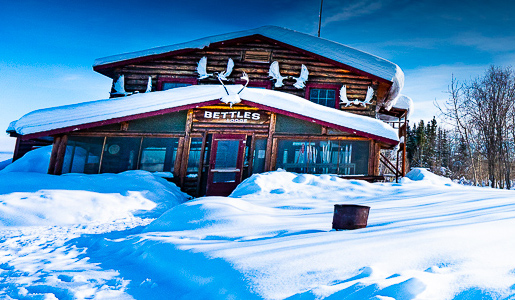 The "Bettles Lodge" is a remote wilderness lodge located in Bettles, Alaska, which is known for its excellent northern lights viewing opportunities. Bettles Lodge is situated in the heart of Alaska, far away from major sources of light pollution and urban areas. Its location 35 miles north of the Arctic Circle provides a higher chance of witnessing the northern lights due to its proximity to the auroral oval, where the aurora borealis is most active. The remote wilderness surroundings of Bettles Lodge offer exceptionally dark skies, allowing for optimal viewing conditions. With little to no light pollution, the night sky is clear and offers a pristine canvas for the vibrant displays of the northern lights. The area around Bettles Lodge often experiences clear weather patterns, which further enhances the chances of seeing the northern lights. Cloudy or overcast conditions can obstruct visibility, so having consistently clear skies increases the likelihood of witnessing the auroras. The lodge provides knowledgeable guides who are well-versed in the behavior and patterns of the northern lights. These guides are often local experts and can offer insights into the best times and locations for optimal viewing opportunities. Despite its remote location, Bettles Lodge offers comfortable accommodations and amenities to ensure a pleasant stay. The lodge provides warm and cozy facilities, including heated cabins and viewing areas where visitors can comfortably wait for the northern lights to appear.
The "Bettles Lodge" is a remote wilderness lodge located in Bettles, Alaska, which is known for its excellent northern lights viewing opportunities. Bettles Lodge is situated in the heart of Alaska, far away from major sources of light pollution and urban areas. Its location 35 miles north of the Arctic Circle provides a higher chance of witnessing the northern lights due to its proximity to the auroral oval, where the aurora borealis is most active. The remote wilderness surroundings of Bettles Lodge offer exceptionally dark skies, allowing for optimal viewing conditions. With little to no light pollution, the night sky is clear and offers a pristine canvas for the vibrant displays of the northern lights. The area around Bettles Lodge often experiences clear weather patterns, which further enhances the chances of seeing the northern lights. Cloudy or overcast conditions can obstruct visibility, so having consistently clear skies increases the likelihood of witnessing the auroras. The lodge provides knowledgeable guides who are well-versed in the behavior and patterns of the northern lights. These guides are often local experts and can offer insights into the best times and locations for optimal viewing opportunities. Despite its remote location, Bettles Lodge offers comfortable accommodations and amenities to ensure a pleasant stay. The lodge provides warm and cozy facilities, including heated cabins and viewing areas where visitors can comfortably wait for the northern lights to appear.
5. Coldfoot
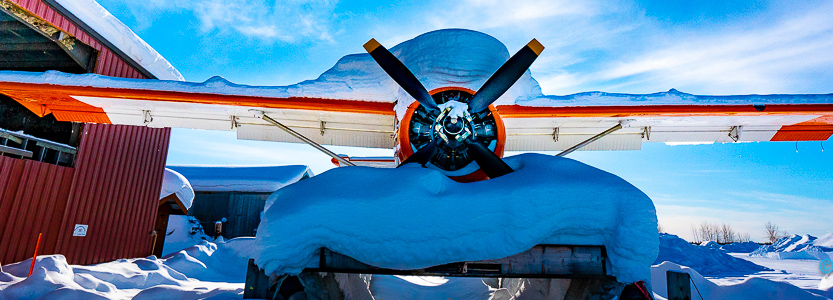 Coldfoot is a small community located along the Dalton Highway, about 60 miles north of the Arctic Circle. Coldfoot is situated in the Arctic region of Alaska, which is known for its high auroral activity. Being located north of the Arctic Circle means that Coldfoot is within the auroral oval, where the northern lights are most active. Coldfoot is a remote area with very little light pollution. The absence of nearby urban centers and artificial lights enhances the visibility of the northern lights and allows for a more immersive and awe-inspiring experience. The area often experiences clear and dark skies, which are essential for optimal northern lights viewing. The region's weather patterns, particularly during the winter months, tend to be less cloudy, increasing the chances of witnessing the auroras. Coldfoot is located away from major sources of human activity and interference. This isolation minimizes disruptions from light pollution, traffic, and other disturbances, providing a serene and undisturbed environment for observing the northern lights. With untouched wilderness and great history (Wiseman) including Atigun Pass and Brooks Mountain range, Coldfoot is a great stop to explore the arctic region.
Coldfoot is a small community located along the Dalton Highway, about 60 miles north of the Arctic Circle. Coldfoot is situated in the Arctic region of Alaska, which is known for its high auroral activity. Being located north of the Arctic Circle means that Coldfoot is within the auroral oval, where the northern lights are most active. Coldfoot is a remote area with very little light pollution. The absence of nearby urban centers and artificial lights enhances the visibility of the northern lights and allows for a more immersive and awe-inspiring experience. The area often experiences clear and dark skies, which are essential for optimal northern lights viewing. The region's weather patterns, particularly during the winter months, tend to be less cloudy, increasing the chances of witnessing the auroras. Coldfoot is located away from major sources of human activity and interference. This isolation minimizes disruptions from light pollution, traffic, and other disturbances, providing a serene and undisturbed environment for observing the northern lights. With untouched wilderness and great history (Wiseman) including Atigun Pass and Brooks Mountain range, Coldfoot is a great stop to explore the arctic region.
6. Talkeetna
There are many locations where you may see the Northern Lights, including Greenland, the Yukon, and Fairbanks. But there's something particularly wonderful here in the quirky small Alaskan hamlet of Talkeetna. Famous Northern Lights photographer Aurora 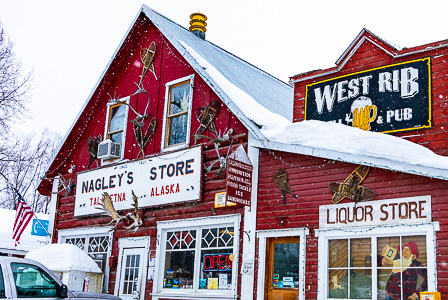 Dora Redman claims that this is because of a special mixture. With the Alaska Range nearby and the rivers converging in Talkeetna, she says, "We have a beautiful landscape." Additionally, the absence of light pollution results in some incredible dark sky. It's amazing how the darkness contrasts with the stunning surroundings. Home of the tallest mountains in North America are depicted in many of Redman's breathtaking images, with the Aurora Borealis swirling above. The Aurora, Andromeda, and Milky Way are in the bottom, with Mt. Foraker, Hunter, and Denali also visible. Shooting photos from the broad observation deck at the Talkeetna Alaskan Lodge, which faces north towards Denali, provides the ultimate lookout (with a cozy fireplace just steps away). During the fall season, it is ideal to combine Talkeetna and Denali National Park with Northern Lights viewing.
Dora Redman claims that this is because of a special mixture. With the Alaska Range nearby and the rivers converging in Talkeetna, she says, "We have a beautiful landscape." Additionally, the absence of light pollution results in some incredible dark sky. It's amazing how the darkness contrasts with the stunning surroundings. Home of the tallest mountains in North America are depicted in many of Redman's breathtaking images, with the Aurora Borealis swirling above. The Aurora, Andromeda, and Milky Way are in the bottom, with Mt. Foraker, Hunter, and Denali also visible. Shooting photos from the broad observation deck at the Talkeetna Alaskan Lodge, which faces north towards Denali, provides the ultimate lookout (with a cozy fireplace just steps away). During the fall season, it is ideal to combine Talkeetna and Denali National Park with Northern Lights viewing.

